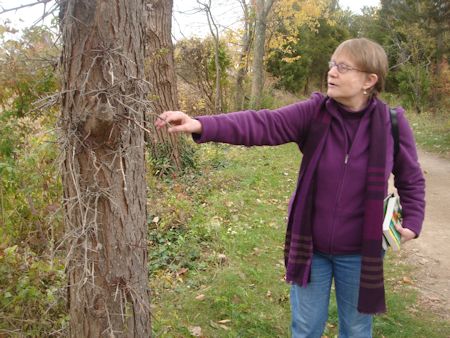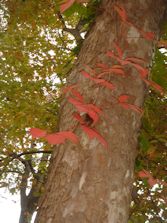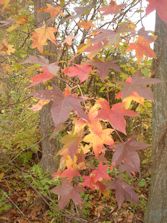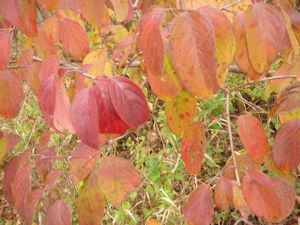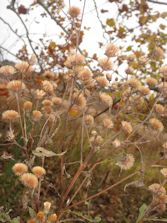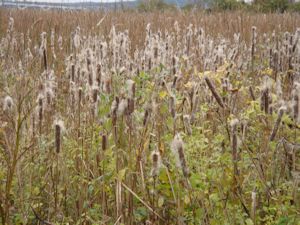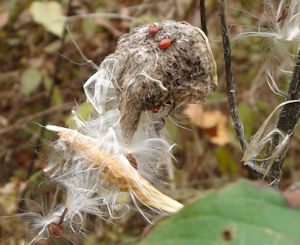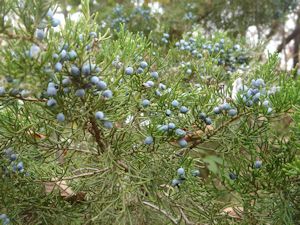It was a nippy, overcast day with temperatures hovering in the low 50s, but the FODMers and friends who turned out for the annual fall colors walk were undaunted. The marsh sported many shades of yellow, orange, red and more and even the plant "skeletons" were interesting, observed FODM walk leader Pat Salamone. The large thorns of the honey locust tree make it a "well-defended" tree, Pat commented (photo).
Barry Sperling explained the day's weather and sky conditions and commented on the interconnections among the elements of nature. "These plants would not be here without our weather," he explained. "It's all related." He noted that in a few days the area would get some rain, "tropical moisture," from Hurricane Patricia that slammed Mexico's west coast on October 22-23.
In addition to plants, the group spotted cardinals, crows, mallards, cormorants, a kinglet, yellow-rumped warblers and great egrets. The walk climaxed with a beaver swimming by near the boardwalk.
|
|
|
|
|
|
|
|
|
|
|
|
Photos and captions courtesy of Glenda Booth.

